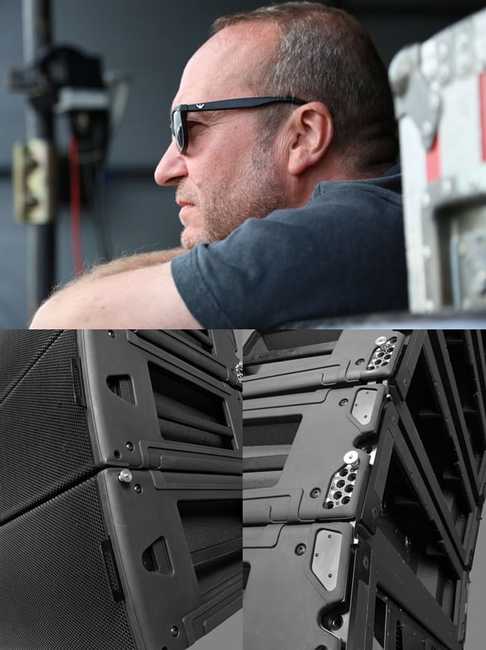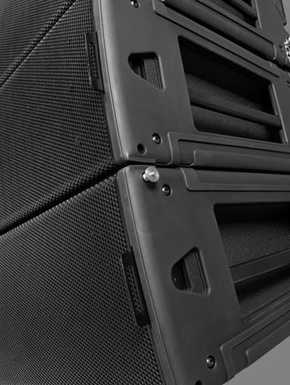IN SEARCH OF SPACE – BY SIMON HONYWILL
I am a great advocate of the concept of space in audio. Let me explain. Everywhere you look in the world of sound, space is associated with it in some way or other. The obvious one is in acoustics and architecture, a pet subject of mine. If we are fortunate we may find ourselves attending an event in a piece of architecture where the 'space' has been designed for purpose – a concert in a concert hall, a conference in a conference room, a sermon in a mosque or church. During the design process of that space, again if we are lucky, somebody took the time to think about what was being presented in the space, and considered what the listening experience might be like for those choosing to attend. This has been going on for some time. The Greeks and Romans seemed to understand a thing or two about acoustics, as we all now know. Out of necessity, they experimented with designs for spaces in which to present art, plays and storytelling where they could deliver clearly the spoken word to as many people as possible – a simple economic formula that every concert promoter can relate to; the scale of the human form, the associated sound power of a human voice box, the dispersion of power over distance and the recognition that early reflections combine with and enhance the original source all led to the classic amphitheatre design, through a natural ability to recognise and correlate the forces and factors at play.
Amphitheatres evolved through a reciprocal process – the craft of performance influenced their design, and in turn their design considerably accelerated the creative process for the playwrights and composers. The legacy of their fundamental design concept is still evident today in many spaces where people gather for a common experience, be it music or speech, faith or politics. Technological advances in materials and a deeper understanding of acoustics has led to other basic shapes being developed, but they all owe their existence to the ancient world. Beyond acoustics, there are many other considerations of course, but I think that, as with so many things in the 21st Century, there is change happening and we the people have to keep up. When I say we, and because this is supposedly an article about audio, I mean those of us who have chosen to take responsibility for enhancing the experiences of others through the fine art of making things louder.
As sound engineers many of us are faced with a vast array of wildly different acoustic spaces in which we are expected to deliver a result. In order to find that result it is vital that, as much as is possible, we have a loudspeaker system design that is fit for purpose. By this I mean not only a design that has the requisite power and fidelity, but that also enables us to 'fit' the sound into the space, focussing the energy where it is required and keeping it away from where it is not. It is this that has been one of the main thrusts of the design process for all modern loudspeaker manufacturers worth their salt, and it must be said that some have achieved this better than others.
I would also say that the design focus for many has been on what is happening at the loudspeaker grille and not what is actually happening at the listeners' ears – all of them, from the front row to the back of the venue – not just the front of house engineer's. I believe that the emphasis has been on the infinitesimally fine details of electroacoustics in an ever-decreasing circle of attempted one-upmanship in an over-crowded marketplace, and that marketing of the supposed advantages of one approach to acoustic control over another has led to a situation where the technology has all but overtaken the listening experience.
The result is that we have a vast number of systems that achieve good results in the right hands in that SPL within the listening area is reasonably consistent, but frequency response varies widely from front to back, even with eq and level control over pairs of cabinets in an array. A system engineer that is competent and confident to dig in this deep can, given time, measure and adjust pairs of cabinets accordingly, but we all know that this time is rarely available. I have just recently mixed on a very well known, recently released system that took almost two hours to set up to my satisfaction, on a flat site some 60 meters deep. The tools available were standard issue analysis and processing programs that we all know and love. It was fortunate that we had the time to do it, because if we had not, the experience for the audience would have been far from egalitarian, so different was the spectral balance from front to back.
The physical space in which the system is expected to perform, and the actual size and shape of the audience must dictate the distribution of SPL and frequency response – in other words it has to be the case that a given loudspeaker array needs to be acoustically and electronically designed and processed to deliver as even an experience as possible, but it must also be able to do this without compromising what the mix engineer and artist wants from it.
I have been accused of being biased and narrow-minded when I talk to people about Martin Audio's MLA and other systems. I don't believe I am, because I do believe my ears, and as yet I have not heard a system so musical and accommodating. Whilst other manufacturers have been concentrating on making better and better systems that deliver at the loudspeaker grille, Martin Audio have been busy creating something that totally changes the game, and delivers at the ears of the audience. It does this with a set of tools and equipment that enable rapid set up, and most importantly allow the user complete control over the extremely complex parameters at play. As a front of house engineer sat amongst an audience, you hear what they hear, wherever they are sat. As a system engineer you can build a system that gives the mix engineer the same platform to mix on whatever the venue. Long arrays, short arrays, high curvature, low curvature, all the 'pre-sets' supplied with standard line arrays (which lets face it are often wrong) are now irrelevant, as the system is always designed and processed to fit the space, and the results are as consistent as you want to make them.
For me, the best thing about these systems is their amazing subtlety and finesse. Every tiny tweak counts, even in the worst acoustic space. What one is presented with is a neutral (or coloured to taste) platform to build a mix on which you, as the person responsible for what the audience hears, can truly indulge in the knowledge that your skills are fully represented. I don't know about you, but in my search for space in my mixes, I've moved on from line arrays.



